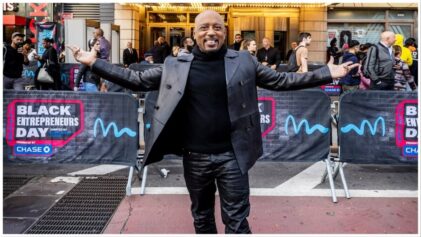Sophie Kloppenburg, 17, of Mount Vernon, Indiana, helped give seven Black men who were victims of the state’s largest recorded lynching a memorial 144 years after their gruesome fates.
Kloppenburg became curious about the men lynched in a town where discussions on race are scarce. Her persistence paid off with a formal memorial which now sits at the very location some of the men were hanged many years ago.
The high school senior lives in a small city that is 90 percent white, and she says discussions on race are far and few between. Mount Vernon has roughly 6,400 residents and sits within the confines of Posey County, Indiana, about 20 miles west of Evansville.
“It’s a predominantly white community so they don’t have to have these conversations often about race or anything, they’re in their own bubble and sure,” Kloppenburg said.

Kloppenburg learned about the lynching while practicing for her driver’s license, when she and a family friend were talking about Mount Vernon’s history. Kloppenburg was stunned to learn her hometown possessed such a dark racial history that resulted in such a large-scale lynching.
“We got to talking about Black history and everything and he told me about the lynchings that had happened, and I was obviously shocked because I’ve lived here my whole life and never knew that had happened,” Kloppenburg said. Kloppenburg says she found much of her research by reading “Judge Lynch” by Indiana Judge James Redwine.
The lynchings followed a similar patten of many other recorded lynchings of African-Americans during the late 1800s and early 1900s. The Equal Justice Initiative reports 4,075 documented lynchings occurred in the Southern U.S. between 1877 and 1950, although the organization suspects more lynchings went unreported.

In October of 1878, a vigilante white mob killed seven Black men over the span of three days, making it the largest recorded lynching of African-Americans in Indiana history according to University of Southern Indiana historians.
Brothers Daniel and John Harrison, their father Daniel Harrison Sr., Jim Good, William Chambers, Edward Warner and Jeff Hopkins were the victims of lynched.
The mob chased the two Harrison brothers from their homes and their gruesome fates included being burned to death in the firebox of a steam locomotive, and being shot to death and then stuffed into the hollow trunk of a tree.
The brothers’ father, Daniel Harrison, was arrested and later kidnapped from his jail cell by a white mob, and mutilated.
The remaining Black men – Good, Chambers, Warner, and Hopkins – were taken from the jail and hanged in front of the Posey County courthouse after being accused of raping three white prostitutes. Not one mob members was indicted or faced prosecution for killing the Black men.
Kloppenburg was moved by the story of the men’s fates, and when she learned no mention of the lynchings could be found at the courthouse, she wanted to recognize them with a formal memorial.
The 17-year-old’s efforts were met with resistance as many within the predominantly white county, including its leaders had little to no desire to recognize the lynched men or even acknowledge its racist past.
Tory Schendel-Vyvoda, is the curator at the Evansville African-American Museum, and she is thrilled to see Sophie’s efforts come to fruition because she understands the mountainous opposition the 17-year-old faced.
Schendel-Vyvoda says over the generations, Mount Vernon, and Posey County at-large developed a reputation not welcoming of people of color.
“There have been Smithsonian scholars that have come through these geographical locations, specifically in Mount Vernon and New Harmony, to study these smaller rural towns because they are historically known as sundown towns, meaning if you aren’t the appropriate white, Christian in these areas, you do need to be extremely cognizant and careful,” Schendel-Vyvoda said.
Schendel-Vyvoda’s reference to “sundown towns” refers to racial harassment and threats of bodily harm toward Black people in communities that enforced policies that they were whites-only locales after dark.
“Sophie and everything she has been able to do, to go against these people and to be resilient, and not taking no for an answer and not allowing them to gaslight her and push her aside that it was that long ago and to don’t worry about it, she had to shift through conversations like that,” Schendel-Vyvoda said.
After appealing to Posey County Commissioners on five different occasions, they finally agreed to Kloppenburg’s plan to have a memorial for the lynched men.
Posey County Commission President Bill Collins, said his initial reaction to Sophie’s request for the memorial be placed in front of the courthouse was to say, “no, not because the project wasn’t worthy, but because our courthouse is the face of Posey County, and I was afraid that if we started putting any project on there, the floodgates would open and it would overwhelm the courthouse.”
Collins’ fellow county commissioner Bryan Schorr told Atlanta Black Star the commission’s concern was, “more about getting the wording right and making sure it was accurate and captured people’s interest in a positive way that would intrigue county residents and visitors to learn more about the events of 1878.”
Schorr went on to say the commission was “very impressed with Sophie’s maturity and passion” about the memorial project.
Despite the commission’s overall support, Kloppenburg said, she had to reluctantly make some concessions to move the memorial project forward.
“I had to take out to me, really important words like, lynched or mobbed but I couldn’t use those really important words because it made people too uncomfortable,” Kloppenburg said.
“They also wanted me not to include the word, African-American in there, and I was like, absolutely not, what’s the point of us putting this up there if people don’t know this was a racially motivated murder,” she continued.
With the help of the Evansville African-American Museum and other supporters she gained along the way, Kloppenburg was able to raise $13,500 needed for the historical marker and bench to formally recognize the lynched African-American men which now rests on the southeast corner of the courthouse, the location many of them lost their lives 144-years ago.

“It’s kind of like a grave marker because those men never got a proper burial and God only knows what those people did with their bodies after they were hanged,” Kloppenburg said.
“I think I’m ultimately still happy we got something in the ground for these men because in my mind, it’s like, baby steps because a town like Mount Vernon, Indiana, isn’t going to be super gung-ho about something like this,” Kloppenburg continued about the completion of the memorial project.
Kloppenburg’s efforts garnered local and national recognition as the memorial bench and marker were unveiled at a formal ceremony with more than a hundred people in attendance on October 23.
Although the 17-year-old plans to attend Columbia University next year, she says in the meantime, she plans to continue working with the University of Southern Indiana on a curriculum to teach future generations about Posey County, Indiana’s history on race and the Black men lynched.


